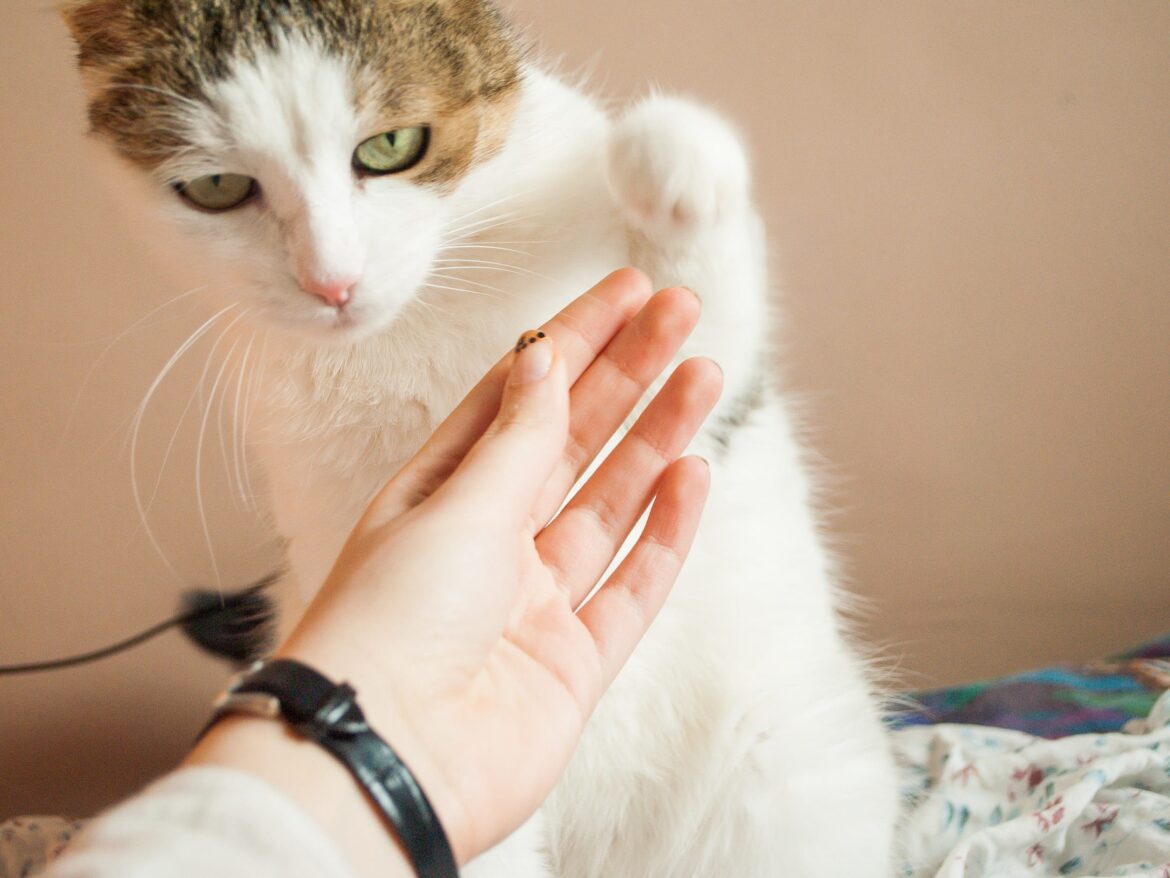One of the most common preconceptions about cats is that they can’t be trained. However, this is not necessarily the case: it depends on the right approach. To find out how to train your pet, click here.
How to train cats successfully
What cat owner hasn’t had to hear that cats can’t be trained at all? But this is wrong. Of course, training a cat is different from training a dog, but it’s not impossible. We have summarised for you here what you should consider for successful cat training.
- It is best to start training your kitten as soon as you move in. The earlier you start teaching different rules, the better. You live together and your furry roommate should also abide by one or two rules. By the way, you can also train older cats, but this requires much more patience, as older animals have already developed habitual behaviours.
- It is important that you are aware that cats do not obey for you. They do it either because they enjoy it themselves or because they expect a reward. So you are also following your cat’s natural instincts.
- Treats can be used as a reward. However, these should only be given to the cat in small amounts so that it does not necessarily gain weight because of potential success. It’s best to choose small, healthy treats that your cat will still like.
- Education should be playful and in shorter sessions, so your cat doesn’t lose the desire to learn. Plan beforehand what you would like to teach your pet, practice regularly and also remember to always reward your cat for progress and obedience.
- A basic prerequisite for a sense of achievement in training your pet is cat-friendly housing. This includes sufficient retreats and places to lie down and hide, nutritious food, a clean litter tray, sufficient fresh water, opportunities to run and play and attention from you. By creating a good relationship between you and your pet, you will also make parenting easier.
- Every cat has a different character and therefore also an individual learning behaviour. This cannot necessarily be attributed to the breed, but some breeds are more affectionate and people-oriented than others. If you are thinking about getting a four-legged friend, it is advisable to find out about the temperament and characteristics of different breeds in advance.
- While a Neva Masquerade, for example, is very cuddly, the Somali breed is considered rather independent and suspicious. Burmese cats are very attached to people and, like Russian Blues, are very lively cats. The American Lynx is said to have a very headstrong temper. The Maine Coon cat, on the other hand, is known for its intelligence, and is also very affectionate and sociable.
Basic behaviour should be taught to cats first
Most importantly, don’t overwhelm your cat or ask for too much at once. Especially in the beginning, teach her behaviours that are also useful in everyday life.
- For example, don’t let your cat get into the habit of going on the dining table or kitchen counter. Put them back on the floor or scratching post and say “No!” calmly but clearly.
- To avoid your cat scratching or biting, even if you just want to pet her, do not use your hands or feet as toys for small kittens. Also, you should never hold them against their will. This encourages the cat’s hunting instinct and she goes with the natural instinct.
- It is also very helpful if your cat goes into the carrier voluntarily from an early age. You can support this behaviour by making the box familiar to your kitten: Leave the open transport box in the flat with a blanket or toy, play with the cat starting from the box. This way the box is nothing strange for your pet.
- Once you have taught your cat basic behaviours, you can train it to do more tricks. For example, training with a clicker is a good way to do this.
This is what you should keep in mind when training your pet
For successful training of your four-legged friend, you should above all remain patient and calm. Do not overtax your cat and never demand too much too quickly.
- Stay consistent! Even if your cat doesn’t listen: Don’t give in and assert yourself, this is the only way your cat will learn the rules you have set up.
- Stay positive and encourage your cat. Stress won’t make the cat learn, and punishment will make it learn even less. Instead, reward progress and ignore disobedience. Otherwise, your pet will only perceive that she is being rewarded with attention even when she misbehaves.
- If your cat still does not obey, you can spray it with a few drops of water if necessary. Your cat will see this as a punishment, but you won’t hurt her in the process.
This is what you should avoid at all costs when training cats
Do not use force under any circumstances! This will only result in intimidated and fearful behaviour in your kitten. Education should never be violent, even with animals.
- Don’t get loud! Cats have much better hearing than humans. Shouting or roaring will only hurt your kitten’s ears and is of no other use. It is quite enough to raise your voice a little when your cat has made a mistake.
- Don’t force your cat. Give your pet time to learn what it can and cannot do.
- Don’t be resentful. A cat will not remember what it did wrong some time later, so it is no use reprimanding it afterwards.
